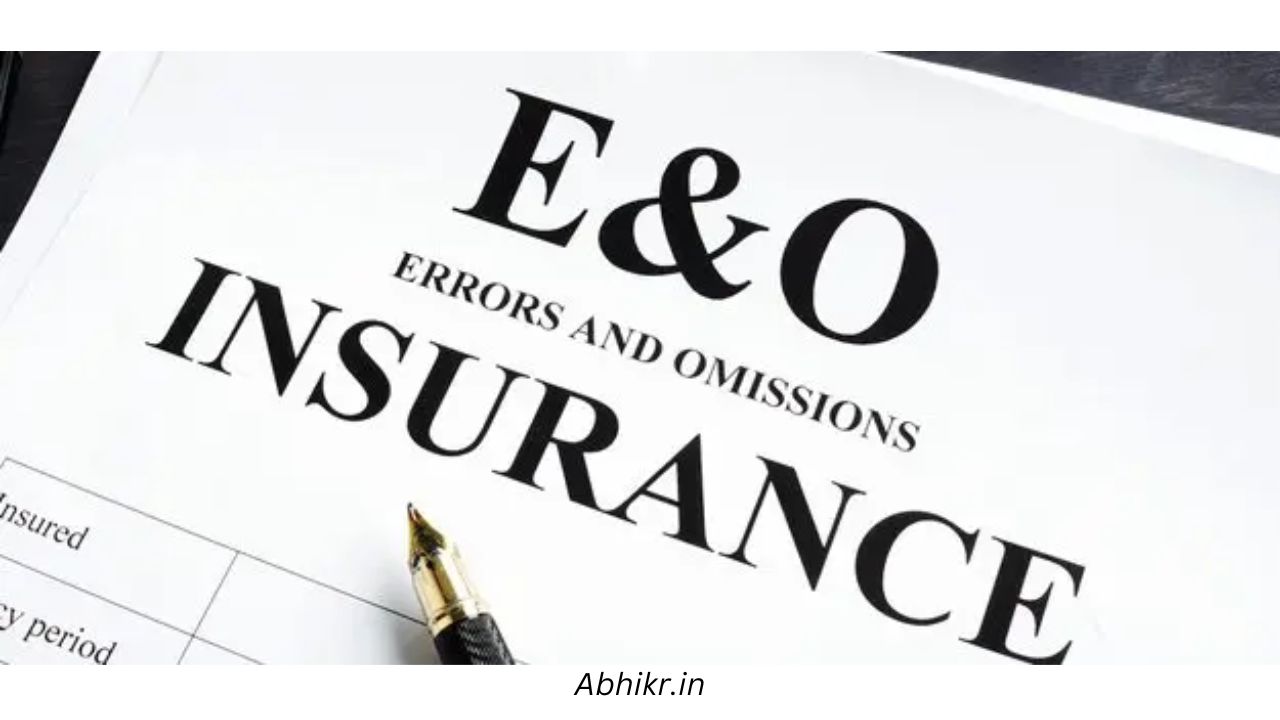Errors and omissions (E&O) insurance is a type of professional liability insurance that protects businesses and professionals from claims of negligence or professional misconduct. E&O insurance can cover a wide range of claims, including:
- Failure to provide adequate services
- Incorrect advice or information
- Misrepresentation or omission of facts
- Breach of contract
- Damage caused by negligence
E&O insurance is important for businesses and professionals of all sizes, but it is especially important for businesses that provide services to others, such as lawyers, accountants, engineers, and architects. E&O insurance can help to protect businesses from financial losses caused by lawsuits, legal fees, and settlement payments.
Why Do You Need E&O Insurance?
Even the most careful businesses and professionals can make mistakes. And when you make a mistake, you could be sued for negligence or professional misconduct. E&O insurance can help to protect you from these financial risks.
Without E&O insurance, you could be forced to pay out of pocket for legal fees and settlement payments. Even if you win a lawsuit, you could still be responsible for your legal costs. E&O insurance can help to cover these costs, so you can focus on running your business or providing your services.
Who Needs E&O Insurance?
Any business or professional that provides services to others should consider purchasing E&O insurance. This includes:
- Lawyers
- Accountants
- Engineers
- Architects
- Doctors
- Nurses
- Financial advisors
- Real estate agents
- Insurance agents
- Consultants
If you provide services to others, you could be sued for negligence or professional misconduct. E&O insurance can help to protect you from these financial risks.
How Does E&O Insurance Work?
E&O insurance policies typically cover legal defense costs and settlement payments up to the policy limit. When you purchase an E&O insurance policy, you will need to choose a deductible. The deductible is the amount of money that you will have to pay out of pocket before your insurance company will begin to pay for your legal defense and settlement costs.
If you are sued for negligence or professional misconduct, your E&O insurance company will provide you with legal representation. If you are found liable, your insurance company will pay for the settlement or judgment up to the policy limit.
Types of E&O Insurance Coverage
There are a variety of different types of E&O insurance coverage available. Some policies are designed for specific professions, such as lawyers, accountants, and architects. Other policies are more general and can be used by businesses of all types.
Here are some of the most common types of E&O insurance coverage:
- Professional liability coverage: This type of coverage protects businesses and professionals from claims of negligence or professional misconduct.
- Cyber liability coverage: This type of coverage protects businesses from claims arising from data breaches, hacking, and other cyberattacks.
- Intellectual property liability coverage: This type of coverage protects businesses from claims arising from the infringement of intellectual property rights, such as copyrights, trademarks, and patents.
- Advertising liability coverage: This type of coverage protects businesses from claims arising from false or misleading advertising.
E&O Insurance Deductibles and Limits
E&O insurance policies typically have deductibles and limits. The deductible is the amount of money that you will have to pay out of pocket before your insurance company will begin to pay for your legal defense and settlement costs. The limit is the maximum amount of money that your insurance company will pay for your legal defense and settlement costs.
When choosing an E&O insurance policy, it is important to consider your deductible and limit needs. If you are a high-risk business or professional, you may want to consider a policy with a lower deductible and a higher limit.
Choosing the Right E&O Insurance Policy
When choosing an E&O insurance policy, there are a few factors that you should consider:
- The type of coverage you need: As mentioned above, there are a variety of different types of E&O insurance coverage available. It is important to choose a policy that covers the types of risks that you are exposed to.
- Your deductible and limit needs: As mentioned above, E&O insurance policies typically have deductibles and limits. It is important to choose a policy with a deductible and limit that meet your needs.
- The cost of the policy: E&O insurance premiums vary depending on the type of coverage you need, your deductible and limit needs, and your risk profile. It is important to compare quotes from different insurers to find the best deal on a policy.
Comparing E&O Insurance Quotes
When comparing E&O insurance quotes, there are a few things that you should keep in mind:
- The type of coverage: Make sure that all of the quotes you compare include the same types of coverage.
- The deductible and limit: Make sure that all of the quotes you compare have the same deductible and limit.
- The cost of the policy: Compare the premiums of all of the quotes you receive.
- The reputation of the insurer: It is important to choose an insurer that has a good reputation. You can read reviews of different insurers online to get an idea of their reputation.
E&O Insurance for Specific Professions
Some professions have specific E&O insurance requirements. For example, lawyers are required to have E&O insurance in many states. Accountants and architects are also required to have E&O insurance in some states.
If you are unsure whether or not you are required to have E&O insurance, you should contact your state’s licensing board.
Common E&O Insurance Claims
Here are some of the most common E&O insurance claims:
- Failure to provide adequate services: This can happen when a business or professional fails to meet the standards of care that are expected of them.
- Incorrect advice or information: This can happen when a business or professional provides incorrect or misleading advice to their clients.
- Misrepresentation or omission of facts: This can happen when a business or professional misrepresents themselves or their services, or when they omit important facts from their clients.
- Breach of contract: This can happen when a business or professional fails to meet the terms of their contract with their clients.
- Damage caused by negligence: This can happen when a business or professional’s negligence causes damage to their clients.
E&O Insurance Tips for Businesses
- Have clear and concise policies and procedures in place: This will help to ensure that your employees are aware of their obligations and that your clients know what to expect.
- Provide regular training to your employees: This will help to ensure that your employees are up-to-date on the latest laws and regulations.
- Monitor your work carefully: Review your work before you submit it to your clients. This will help to identify any potential errors or omissions.
- Be honest and transparent with your clients: Communicate openly with your clients about your services and the risks involved.
- Have a risk management plan in place: This will help you to identify and mitigate potential risks.
Conclusion
E&O insurance is an important type of insurance for businesses and professionals of all types. It can help to protect you from financial losses caused by lawsuits, legal fees, and settlement payments. If you are a business or professional, you should consider purchasing E&O insurance to protect yourself and your business.
Here are some additional tips for businesses and professionals to reduce their risk of E&O claims:
- Get everything in writing: This includes contracts, agreements, and even emails.
- Keep good records: This will help you to document your work and demonstrate your due diligence.
- Be responsive to your clients: If your clients have any questions or concerns, address them promptly.
- Seek help from experts: If you are unsure about something, don’t be afraid to ask for help from a colleague or mentor.
By following these tips, you can help to reduce your risk of E&O claims and protect your business.




Hi there, after reading this amazing piece
of writing i am too cheerful to share my familiarity here with friends.